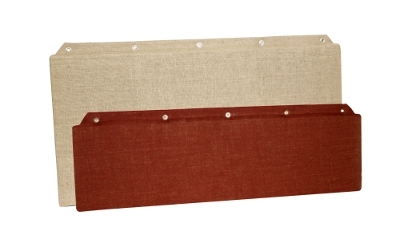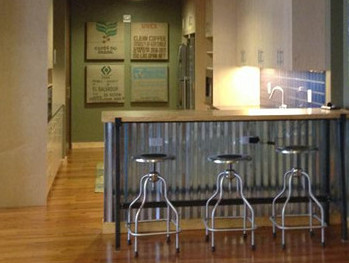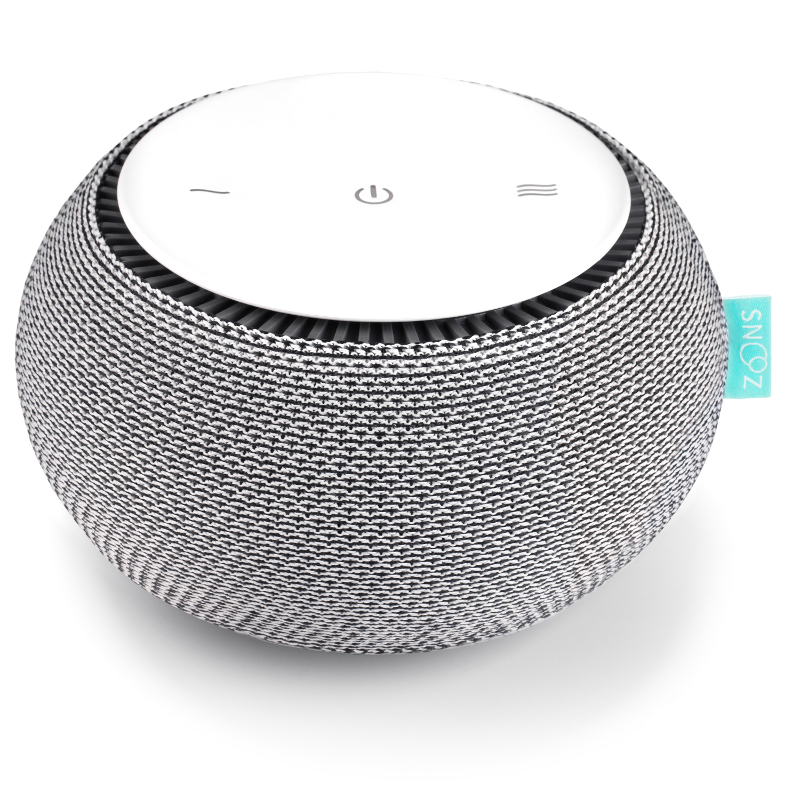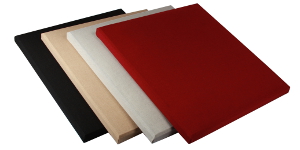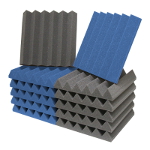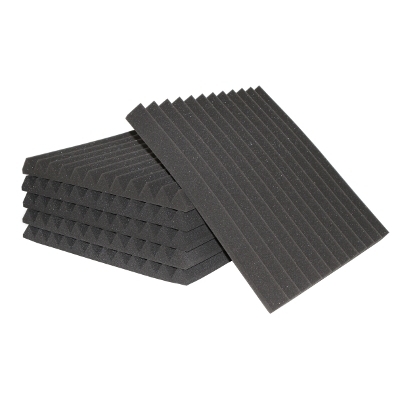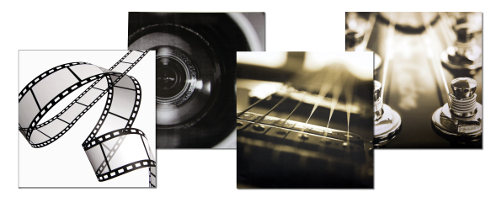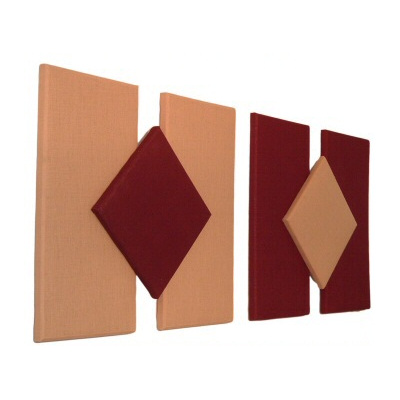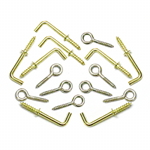
Reverb 101: Room Reverberation and Better Listening Experiences
A great listening experience involves more than just high-quality audio equipment—the way sound moves around the room matters just as much. You don’t have to be an expert acoustician to create an impressive listening environment—just an understanding of some basic acoustic concepts will get you well on your way.
The Basics of Reverberation
Reverberation (or reverb) is important to think about when planning the acoustical treatments for your room. To define reverb, we first need to understand how sound travels from the source to your ear.
When sound is emitted, sound waves take off in every direction. Some waves will travel the straight path from the source to your ear, and the rest will bounce around the room, ricocheting off of hard surfaces until they reach your ear or lose steam and die out. You hear the unadulterated direct sound first—then you start hearing indirect sounds as they arrive. Given that sound travels roughly 770 miles per hour, this happens very fast, and your brain interprets all the copies of sound together as one. The ratio of direct and indirect sounds determines the sound quality.
That is where reverberation comes in. Reverberation is the collection of indirect sounds in an enclosed space. The more sound copies that pile up, the muddier the sound becomes.
How Does Reverberation Affect the Listening Experience?
When direct sound and reverberation combine in a favorable ratio, the sound is rich and full. The effect can bring music to life and even smooth out transitions between musical notes, creating a pleasant, desirable sound.
However, when the mix is off, you hear the unfavorable result: Too much reverb can degrade your listening experience because too many overlapping sounds reduce clarity and speech intelligibility. Sorting through the noise is a lot for our brains to work out and makes listening more fatiguing. So just reduce reverb completely, right? Not exactly. Too little reverb makes sound, especially music, sound dull and one-dimensional.
Fortunately, tools are available to help you create an awesome acoustic environment. The ATS Acoustics Free Online Room Analysis can simulate and display a report about reverb time in your room, with recommendations for treatment. Click here to start your free analysis
Reverberation Time and the RT60 Measurement
There are many environmental factors that contribute to reverberation, so to set a reproducible parameter, acousticians use reverberation time. Reverberation time is the length of time (in seconds) it takes for the original sound to decay by 60 decibels (approximately full-strength to background noise); this is known as the RT60 measurement.
RT60 represents the average decay rate of all the frequencies in a space. High frequency sounds (whistle or shrill voice) and low frequency sounds (bass drum or rumble) can have different reverberation times depending on the conditions in a room. For instance, in a typical home, low frequencies are absorbed by the flex of drywall, causing shorter reverb time; high frequencies reflect off the walls and keep circulating, creating a longer reverb time. On the other hand, in a concert hall with wood walls—which absorb high frequencies more than lows—the low frequencies have a longer reverb time.
Room size is also a factor. Larger rooms promote longer reverb times—the sound waves have farther to travel before reaching a reflective surface. This effect is one way we perceive space; a boomy or echoey atmosphere tells our brains that we are in a large, cavernous room. When the sound in a room is dull and flat, it’s an indication that we are in a confined space. That’s why listening to the way a room sounds can give you an idea of the size, even with your eyes closed.
Acousticians and audio specialists rely on RT60 to design acoustic treatments to optimize the listening experience.
One Reverb Time Does Not Fit All
The purpose of a room dictates the optimum reverberation time. For example, the ideal reverb time for a speech would make an orchestra sound dull and lifeless, while the ideal reverb time for an orchestra would make speech garbled.
Let’s take a look at some examples of optimum reverberation conditions in different applications:
- Auditoriums are large rooms with a lot of hard surfaces that reflect sound waves. Longer reverb times are useful in large spaces to reduce the drop off of sound intensity, which occurs as the sound waves diminish as they travel longer distances. Ideally, there should be enough short reverb time so sound stays crisp and clean and enough long reverb time to create rich and lively sound.
- Lecture-style classrooms work best with a medium reverb time. They need enough sound reflectivity to allow students in the back to hear, while keeping the reverb time low enough for clear, intelligible speech during lessons and discussion. A preschool classroom on the other hand will benefit from acoustical treatments that lower reverb time as much as practical, reducing the loudness and sharpness of sound from playful young students around the room.
- Voice recording booths require short reverb times so only the clear, direct sound is recorded. Artificial reverb can be added to the recording later to achieve the desired effect.
Acoustic Treatments Optimize Sound Quality
Well-designed acoustic treatments can improve sound quality in any listening environment. Wall-mounted acoustic panels absorb sound waves so they don’t ricochet off the wall. This “flattens” the reverb response and cleans up noise in the environment. Although soft surfaces like curtains and carpet absorb high frequencies, they don’t absorb midrange and low frequencies, leaving you with an uneven, dull room tone. As a general rule, the thicker the material, the lower frequencies it absorbs.
The desire for high sound quality goes beyond a theater or recording booth. For example, in restaurants, good acoustics is just as important as good food. Many dining rooms are large with hard reflective surfaces everywhere. When you get a few conversations going, the reverberant noise can make it difficult to hear your companions or enjoy your meal. Savvy restaurant owners strategically place acoustic panels along the walls and ceilings to absorb the desired level of noise. Acoustic treatments can be manipulated to foster a lively, bustling setting or create a subdued, intimate atmosphere.
There are several types of acoustic treatments available to help optimize sound quality:
- Acoustic panels—fabric-wrapped fiberglass or mineral wool panels that mount to the wall, absorb high and midrange frequencies
- Acoustic baffles—similar to panels but are designed to hang from the ceiling, perfect for gyms, auditoriums, etc.
- Acoustic bass traps—extra thick to absorb low frequencies, offered in corner traps, 4-inch panels, or portable stackers
- Acoustic diffusers—scatter sound waves to create a sense of spaciousness, perfect for smaller rooms where too much absorption would dull the sound
- Acoustic ceiling panels—fits standard ceiling grid panels to provide inconspicuous sound treatment, great for classrooms and offices
The experts at ATS Acoustics specialize in finding the right acoustic solutions for residential or commercial spaces. Get started by calling one of our knowledgeable staff at 866-787-7881, or take advantage of the ATS Acoustics Free Online Room Analysis—it simulates and displays a report about reverb time in your room, with recommendations for treatment. Click below to start your free analysis.


